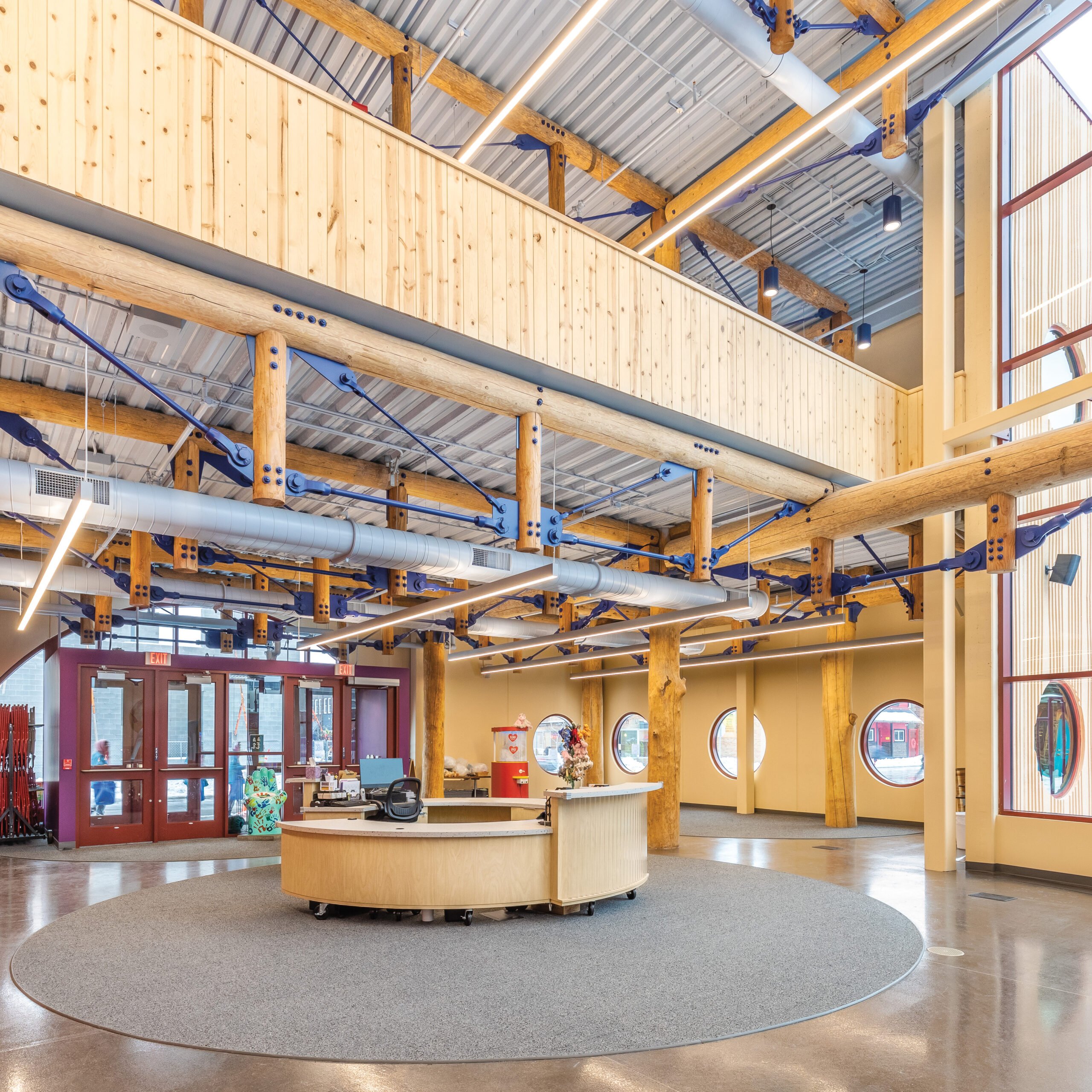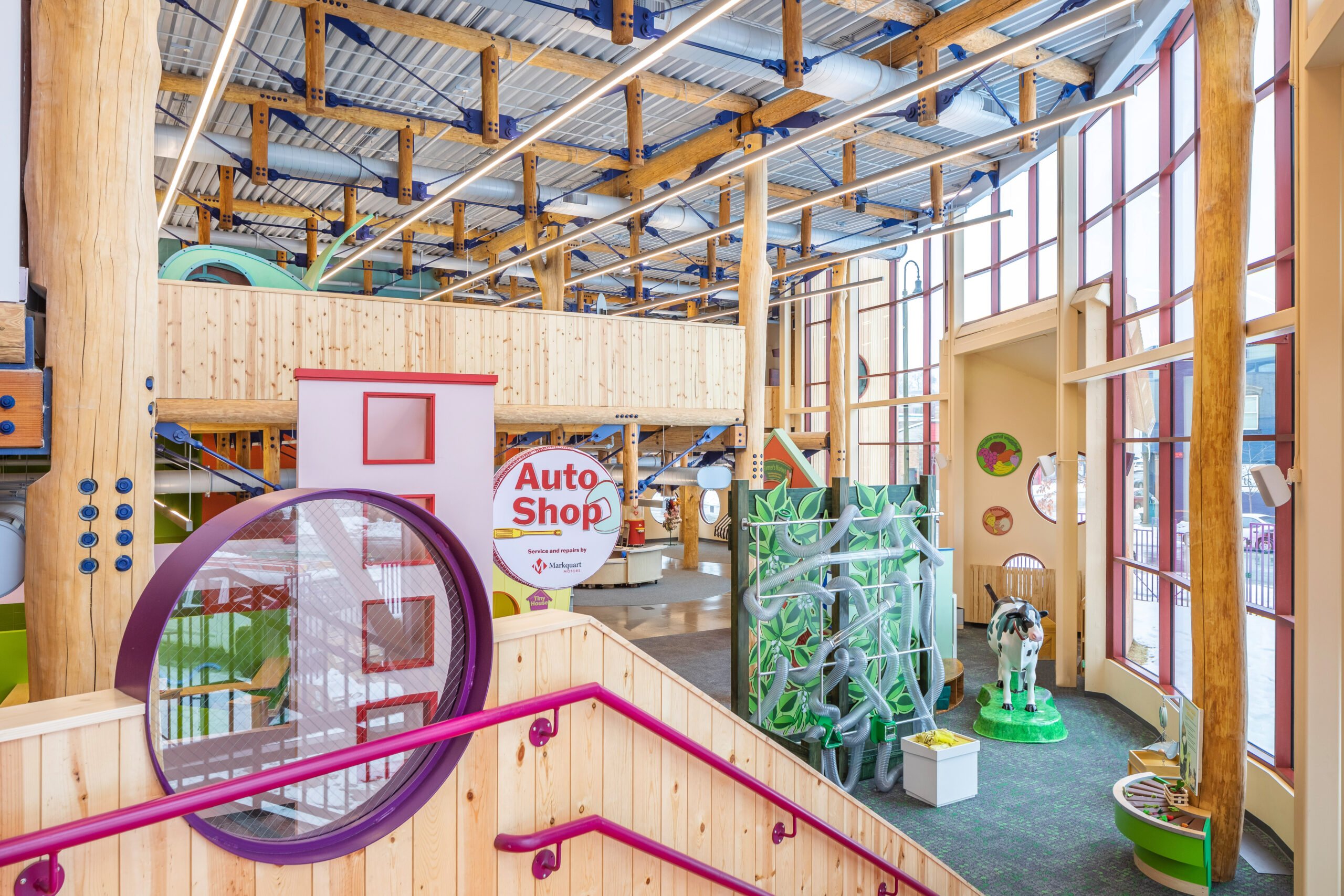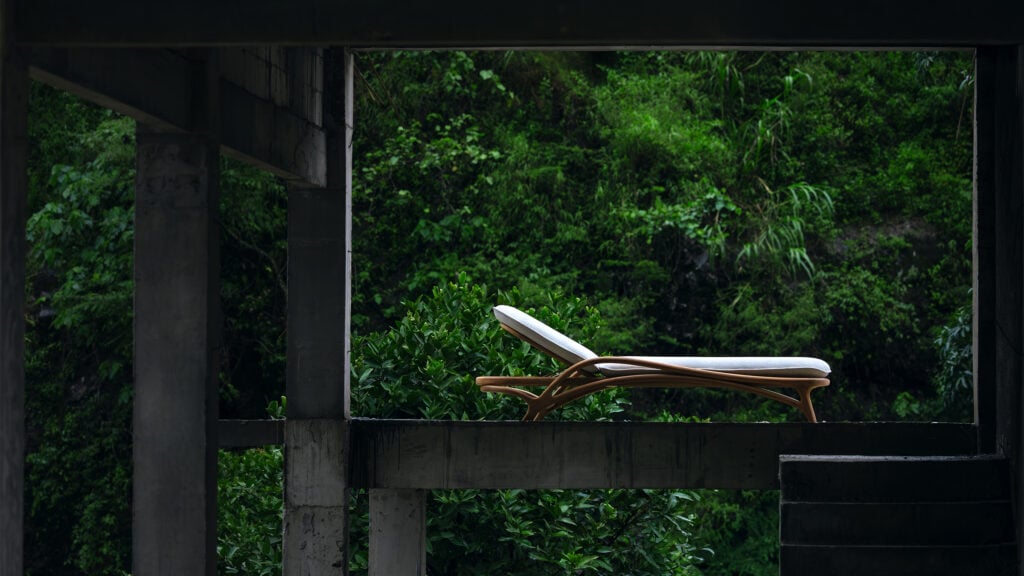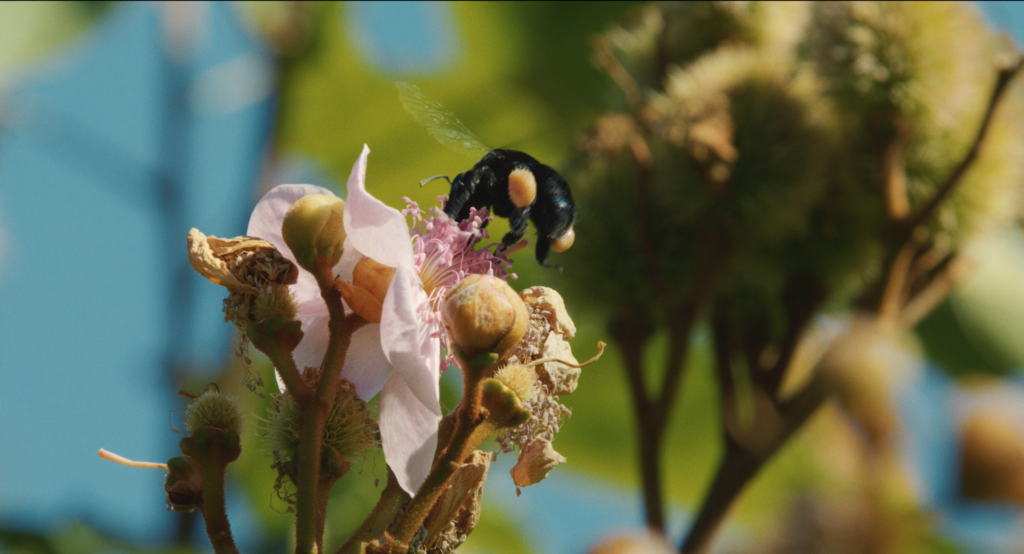
April 5, 2024
WholeTrees Brings Structural Round Timber to the Children’s Museum of Eau Claire
Mass and cross-laminated timber are all the rage in sustainable architecture. But generally wood building products are milled into precise blanks for use in construction. Amelia Baxter, CEO and cofounder of WholeTrees Structures, has a better idea.
“When you leave a tree unmilled and with the outer fibers intact, it is 50 percent stronger than sawed timber with the same cross-sectional properties,” says Baxter, who majored in environmental studies at the University of Chicago and founded WholeTrees with partner architect Roald Gundersen. After initially culling trees in Gundersen’s home state of Wisconsin, they have expanded their efforts to use forests nationwide. Baxter’s overall goal is “to create prosperity between humans and forests.”

But this is not Abe Lincoln log cabin technology. “We have a sophisticated process of working with foresters on what kind of tree we will buy,” she says. “We use a center line and gauge how much fiber is around that. We don’t buy trees whose wobble is too great.”
So far, WholeTrees has focused on commercial and institutional projects instead of residential ones. There are two examples they are especially proud of: the Children’s Museum of Eau Claire, Wisconsin, by Steinberg Hart; and the Pokagon Band of Potawatomi Peacemaking Center in Dowagiac, Michigan, by Seven Generations Architecture and Engineering. In addition to having large trunk members for the main building support, the Eau Claire building has an elaborate system of whole tree trusses engineered in collaboration with WholeTrees.

Digital software is critical to the WholeTrees method. “We begin using 3D scans and can provide those to architects in a variety of programs, from Revit to Rhino and SketchUp,” Baxter says.
“Wood has the lowest carbon emissions of any material,” she continues. “That’s not to say we use only wood. We use a lot of custom steel connections. Steel is very good in compression, whole trees in tension. We combine the two to utilize the best strengths of each.” The use of whole trees earned up to nine credits in LEED v4, she adds.
Baxter is bullish on WholeTrees’ future. Having spent time in Latin America, she envisions that harvesting whole trees there could be a boon to both architecture and the local and regional economies. Her horizon is vast.
She concludes, “In addition to believing in the WholeTrees cause, I love the sensual form of trees.

Would you like to comment on this article? Send your thoughts to: [email protected]
Latest
Profiles
Meet the 2025 Planet Positive Awards Jurors
METROPOLIS announces the esteemed jurors for the 2025 Planet Positive Awards, honoring excellence in sustainable design.
Products
8 Standout Products from Milan Design Week 2025
From hundreds of showcases at Salone del Mobile and Milan, METROPOLIS highlights eight must-see introductions.
Viewpoints
METROPOLIS Celebrates Earth Day 2025
At METROPOLIS, we believe that buildings can be designed in ways that support both people and the planet—Earth Day and every day.





